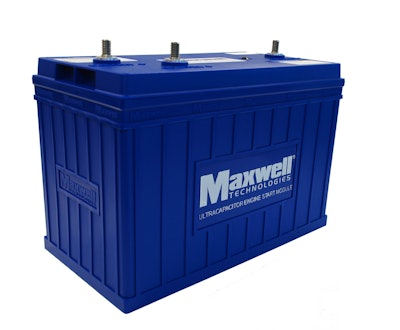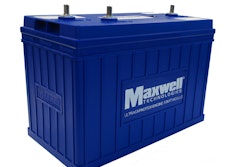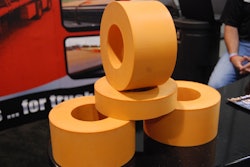 While the concept truck will use solar panels atop the trailer to charge deep-cycle batteries, it will also rely on Maxwell Technologies’ Engine Start Module. The component uses an ultracapacitor to provide starts in temperatures as low as -40 degrees.
While the concept truck will use solar panels atop the trailer to charge deep-cycle batteries, it will also rely on Maxwell Technologies’ Engine Start Module. The component uses an ultracapacitor to provide starts in temperatures as low as -40 degrees.A big problem with trucks and trailers is that they have been designed for the masses, primarily for big carriers. Trucks and trailers need to be as generic as possible so that any truck can pull any trailer.
My Signature Series Truck and Trailer project, however, is built around the idea that we could do better if both are designed to stay together as a set. The first priority is to use the best available technologies to create rigs with maximum fuel efficiency, low lifetime maintenance cost and increased uptime.
I’ve written about the first- and second-generation Signature Series Trucks and the first-generation Signature Series Trailer. Now, focusing on the second-generation trailer, let’s look at some new ideas to achieve those same goals.
AXLE CONFIGURATION. The primary objective is carrying capacity. I wanted a configuration that would optimize fuel mileage and lower maintenance cost, while still allowing for plenty of payload. I also considered maneuverability, tire wear and life.
I am working in a dry van application hauling general commodities, so revenue is not correlated directly to weight. We always have focused on building truck and trailer combinations able to scale the maximum legal limit of 80,000 pounds. I decided instead to focus on a combination that would be able to scale 40,000 to 45,000 pounds of payload, yet weigh considerably less than 80,000 gross.

I am working on a two-axle tractor with a front axle and tire combination that could carry 15,000 pounds and a spread axle trailer. The unit will be able to scale 40,000 pounds on the spread, 20,000 pounds on the single drive axle and 15,000 pounds on the steer axle. That’s a total of 75,000 pounds gross vehicle weight on four axles and only eight wheels.
It will be significantly lighter than most five-axle combinations. The lighter weight and reduced rolling resistance will increase fuel mileage significantly and lower overall maintenance costs. The axles will be able to slide independently, and the forward axle will be liftable.
I also will include a sliding kingpin. This will offer the ability to shift weight between the drive axle and the two sliding trailer axles for maximum flexibility in axle loading. The single-axle tractor also will improve ride and maneuverability.
ELECTRICAL SYSTEM. I plan on using the trailer to generate and store electricity for hotel loads, as well as for heating and cooling the tractor.
I’ll be covering the top of the trailer with lower-profile flexible solar panels to convert solar energy to charge a bank of deep-cycle batteries. There is a tremendous amount of real estate wasted on the top of the trailer, as well as plenty of area to mount the deep-cycle batteries without compromising tractor weight and space. The energy collected by the solar panels and stored in the batteries will be used to run a large inverter for A/C power and hotel loads, as well as running an air-conditioning unit mounted on the back wall of the tractor’s sleeper.
The tractor will have one deep-cycle battery for electrical needs while driving. It also will have an Engine Start Module, which is an ultracapacitor used only for starting. This reduces overall weight and space requirements and ensures that the truck starts in all conditions, no matter how low the other batteries have been drained.
Combining these technologies with the proven technologies in the first- and second-generation units will add significant fuel mileage increases and lower lifetime maintenance costs.
If you have any ideas or feedback for the project, please send it to [email protected].
Read about Kevin’s design for the tractor, a Kenworth T660 glider, via this link.












